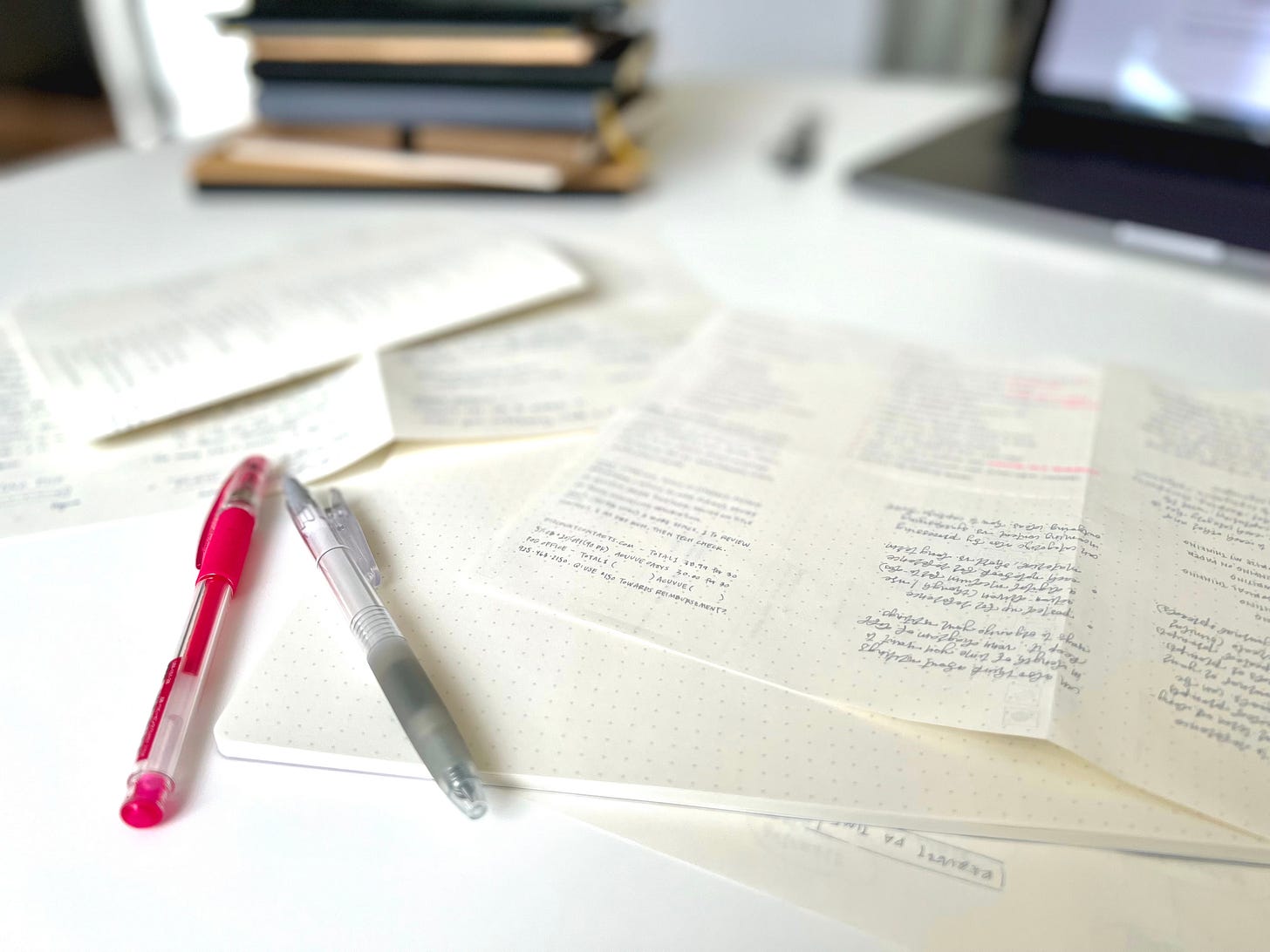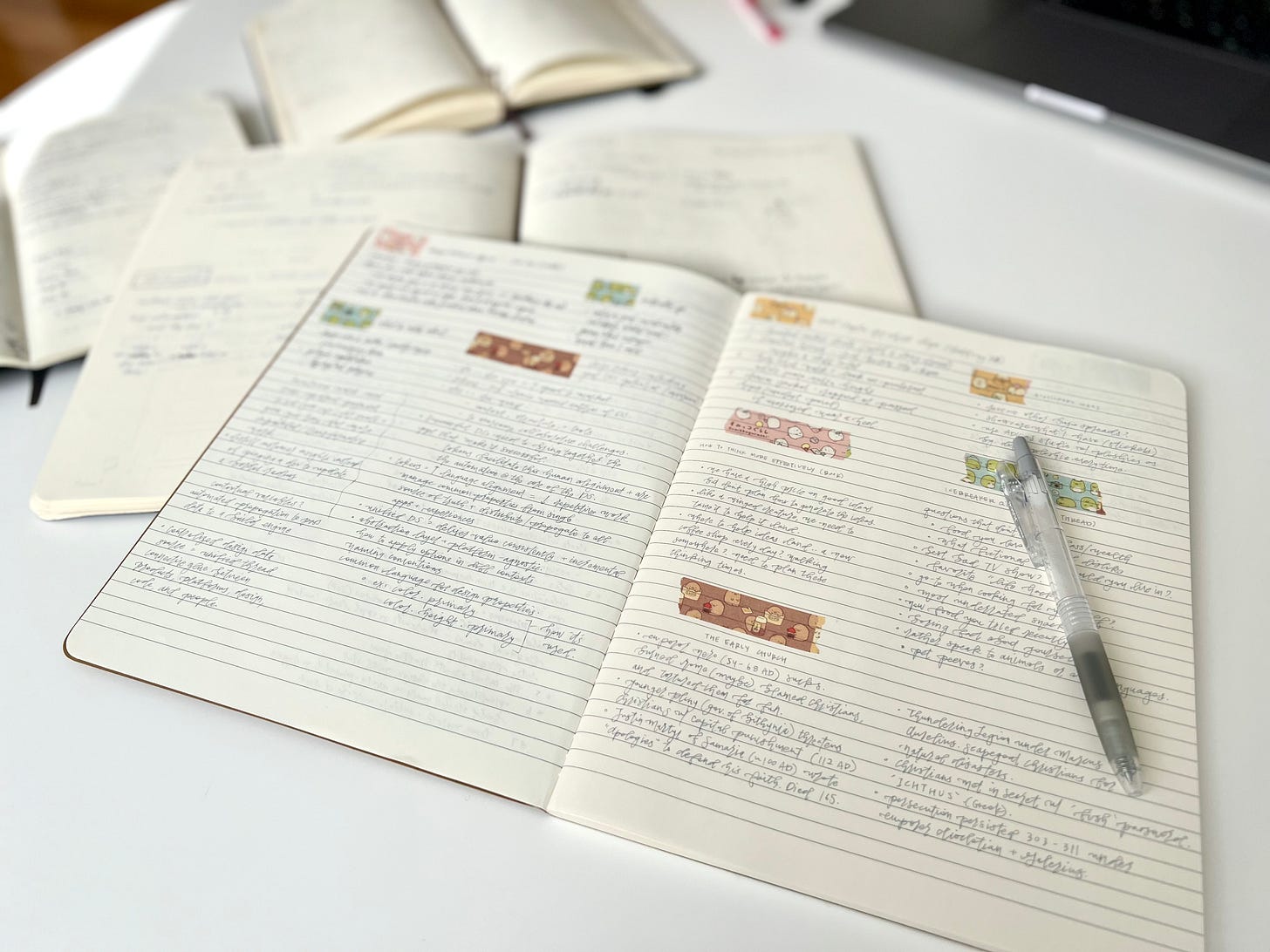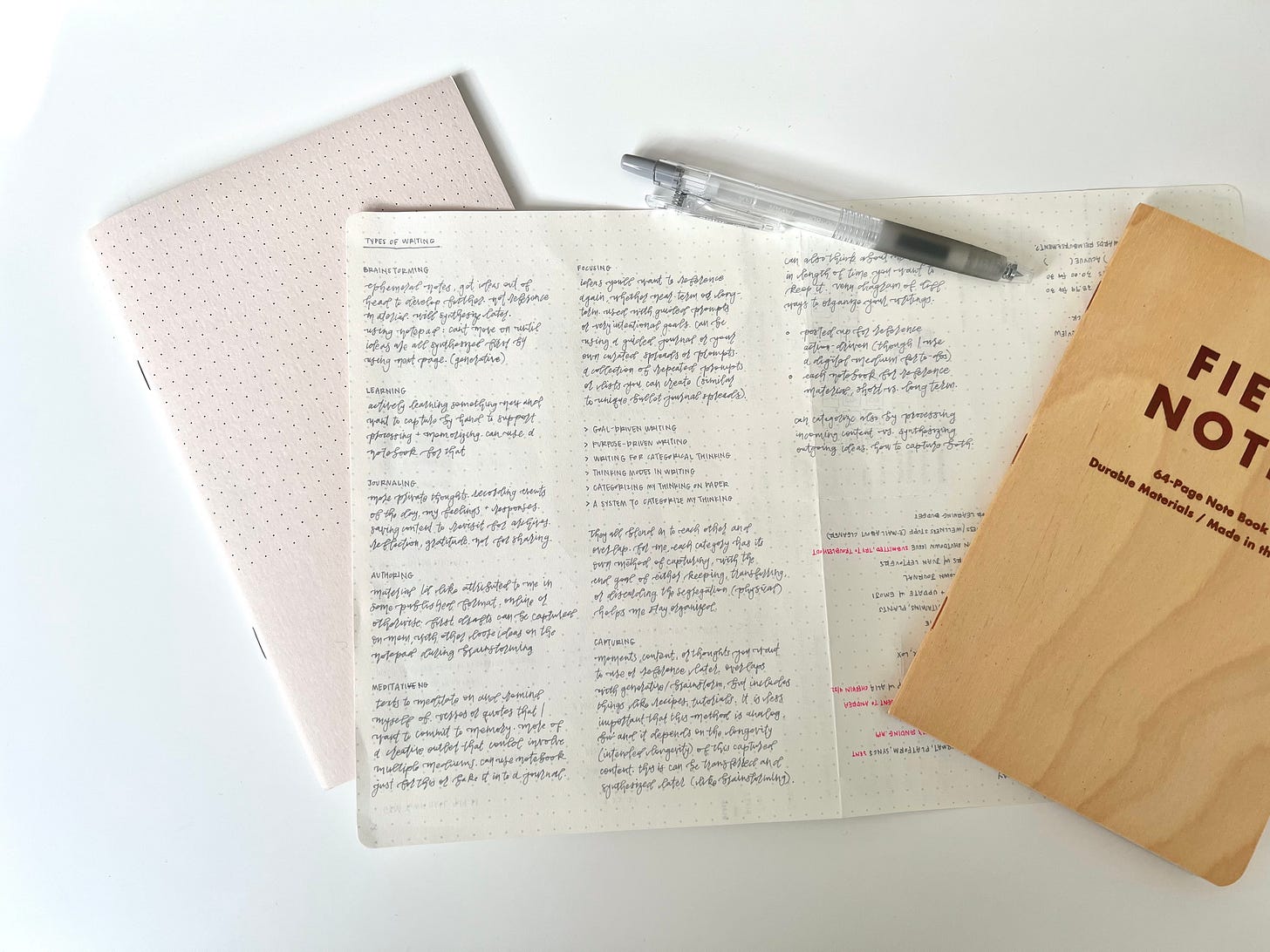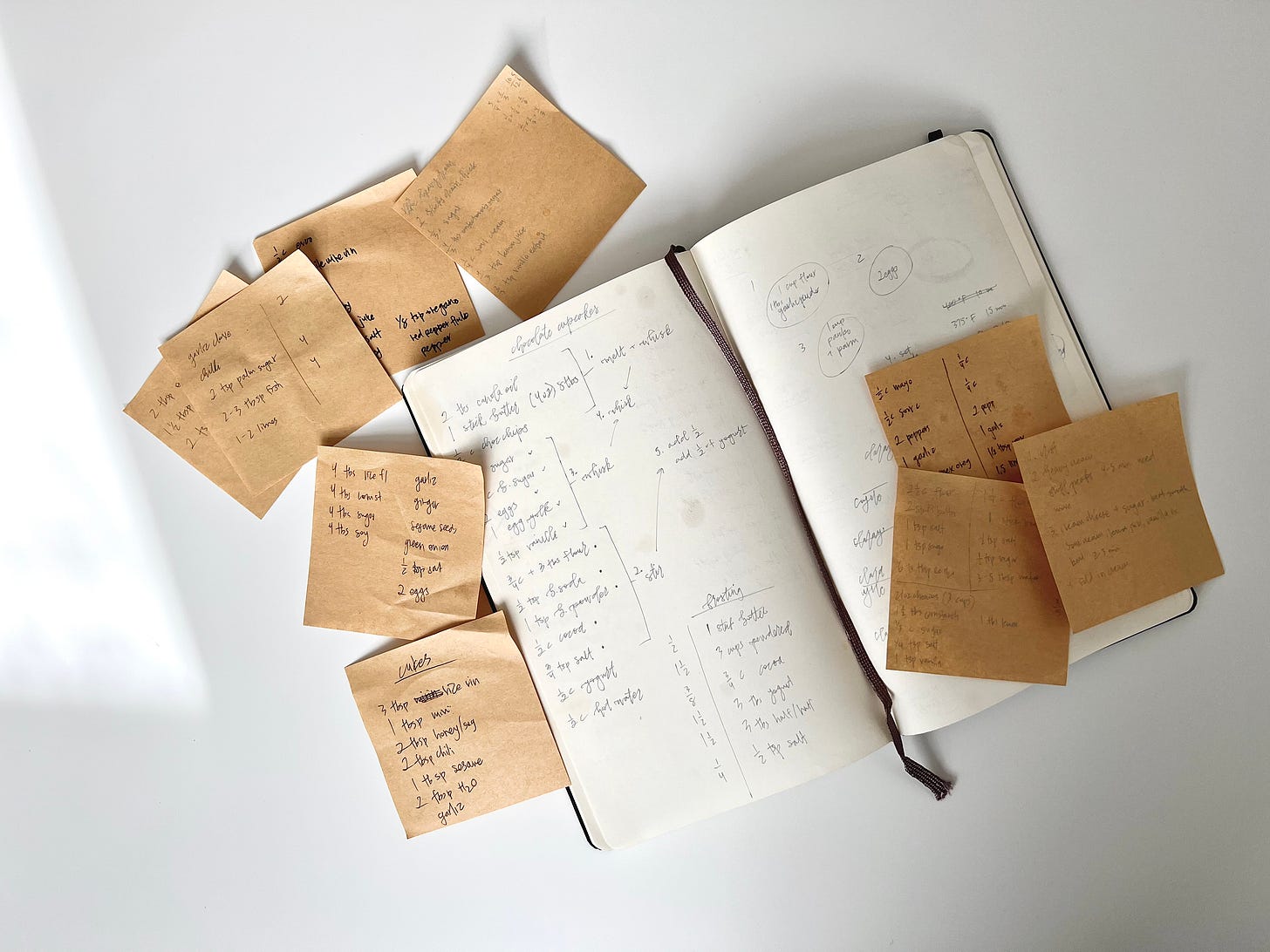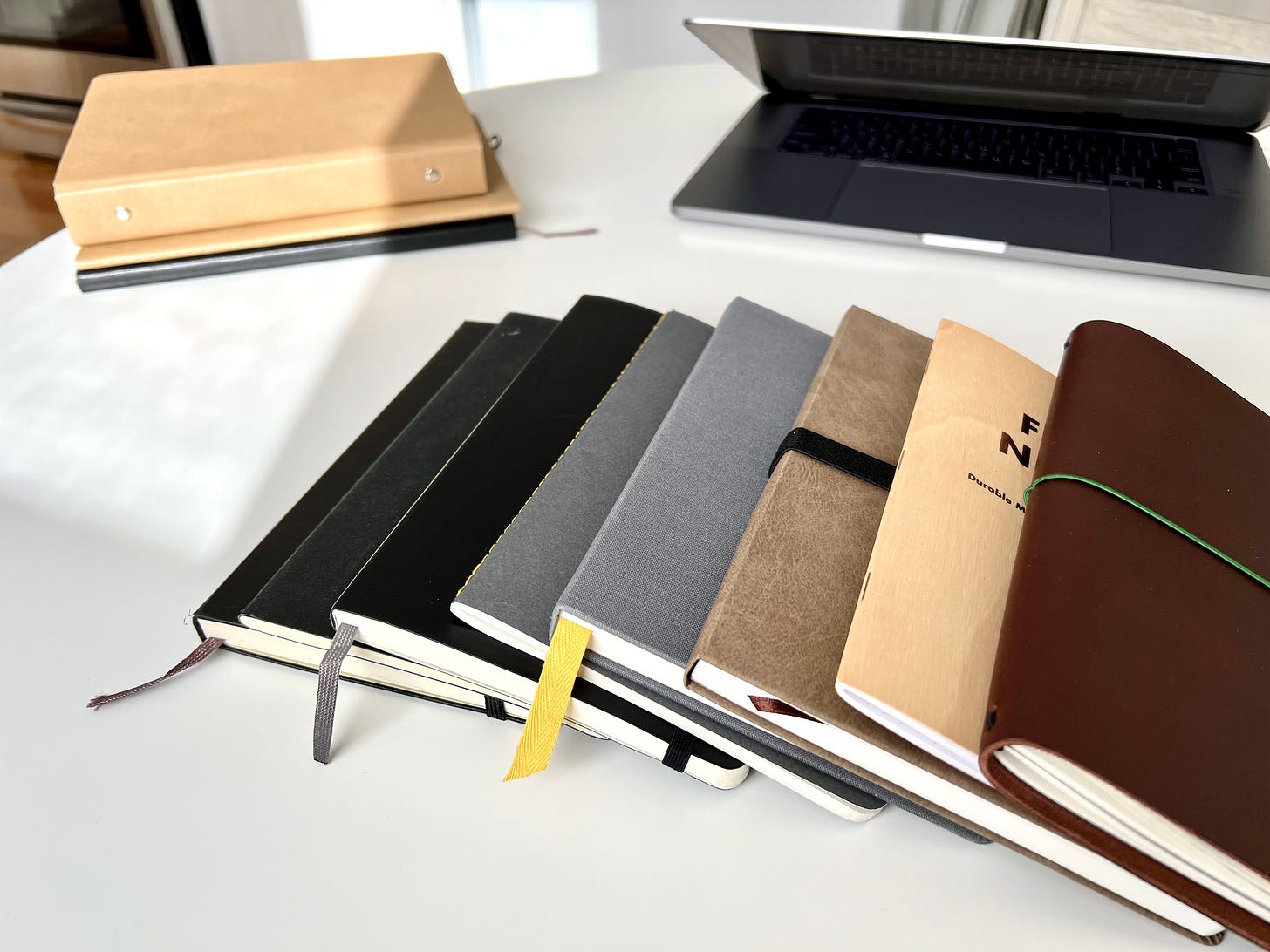Types of writing
Seven types = seven notebooks at least, right?
I’ve found seven types of writing—categories I’ve constructed based on how I’ve been writing over the years. Historically, much of my writing had been captured as scribbles on random papers here and there. In a misplaced notebook. On a sticky note. I had been meaning to find the right medium for the type of writing I’ve been doing. And so, here are the types I have identified thus far:
Brainstorming
These are ephemeral notes. The goal is to get ideas out of the head, without a particular destination yet. These notes are meant to be developed further, just not now. This is less reference material, and more meant to be synthesized later when you’re ready. Using a notepad for this can be especially helpful, as there is no pressure for the thought to be captured in a bound book forever. Once these notes have been synthesized, you can then tear out the page, recycle it, and move on.
Learning
The age-old learning method for school. Though I don’t always need to reference these notes later, the act of writing it out helps with processing and memory.
Journaling
I like having a space for private thoughts. These could be recorded events of the day. Feelings and responses. Perhaps it’s for the archives. I reminisce a lot, so I like to capture the emotion to think on later. I often accompany these entries with stickers and photos. Planning bleeds into this journaling category for me, as I record the day’s events in my planner as well.

Authoring
This is material meant to be published, online or otherwise. This can sometimes be the follow-up stage after a brainstorming or learning phase. Typing at this point could be helpful, though I still find my best thoughts when writing with paper and pen.
Meditating
When there are texts I want to meditate on or think through again and again, I’ll write it out, especially if it’s text I want to commit to memory. This is often a creative outlet for me that can involve multiple mediums. I sometimes use this opportunity to try different pens and papers I’ve been meaning to test. I have a notebook dedicated to this type of writing, though I’ll sometimes noodle around on any victim papers that happen to be lying around.
Focusing
The one type I’d keep if I had to choose. These are ideas you’ll want to reference again. Closely related to brainstorming, this is meant to build focus when things start to get overwhelming or unclear. These type of notes can help develop action items if you’re not sure about next steps. Though this type of writing can start with a blank page, there are some guided prompts that help. I don’t have a curated collection of prompts, but some I reference again and again when I’m feeling stressed include questions like: What are your top two priorities right now? What can I accomplish in the next thirty minutes? What can I save for another day? This type of writing often ends up being a mind map for me. I used to write lists, but have found mind maps to be more helpful. I like doing focus writing first thing in the morning in a notebook set aside for scribbles and mind maps. I’ll also do some focus scribbling/writing on notepads in the middle of a work day when I feel overwhelmed. This type of writing has been most beneficial to me over the years.

Capturing
This type of writing is for notes you know you’ll reference later—things like recipes and tutorials. You should feel comfortable sharing this type of content. Though it overlaps with journaling, it is unlikely I would share my journaling content with others. This type of writing, however, could be great material that anyone can reference. It may even lead to content you’d like to publish eventually. It is less important that this method is analog, and it depends on the intended longevity of this captured content. It can also be transferred and synthesized later (like the brainstorming type).
Parting notes
All of these types of writing blend in with each other. For me, each has its own method of capturing, with the end goal of either keeping, transferring to a different medium, or discarding. Sometimes the process itself was the benefit all along. The physical segregation of these writing types help keep me organized.
These divisions may be arbitrary to some, but it could also be a good starting point if you haven’t thought about the different types of writing you’ve been doing. I’m curious to learn how others keep their thoughts and writing organized. Though software comes into play eventually, it changes too often, and I rely mostly on analog methods for my most organized thinking.
If you’ve got any helpful methods for the types of writing you do, I’d love to hear it.



